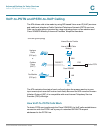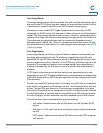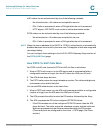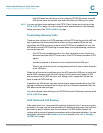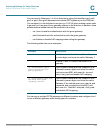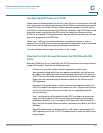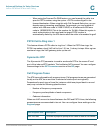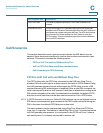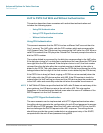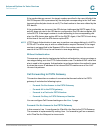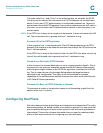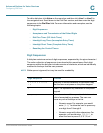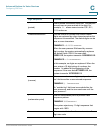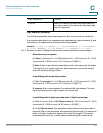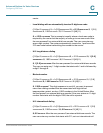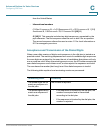
Advanced Options for Voice Services
Call Scenarios
Cisco SPA232D Administration Guide 223
C
VoIP to PSTN Call With and Without Authentication
This section describes three scenarios with and without authentication and
includes the following topics:
• Using PIN Authentication
• Using HTTP Digest Authentication
• Without Authentication
Using PIN Authentication
This scenario assumes that the PSTN Line has a different VoIP account than the
Line 1 account. The VoIP caller calls the FXO number, which auto-answers after
VoIP Answer Delay
. The ATA device then prompts the VoIP caller for a PIN. When a
valid PIN is entered, the ATA plays the
Outside Dial Tone
and prompts the caller to
dial the PSTN number.
The number dialed is processed by the dial plan corresponding to the VoIP caller.
If the dial plan choice is 0, no dial plan is needed and the user hears the PSTN dial
tone right after the PIN is entered. If the dial plan choice is not 0, the final number
returned from the dial plan after the complete number is dialed by the caller is
dialed to the PSTN. The caller does not hear the PSTN dial tone (except for a little
leakage before the first digit of the final number is auto-dialed by the ATA device).
If the PSTN Line is busy (off-hook, ringing, or PSTN line not connected) when the
VoIP caller calls, the ATA device replies with 503. If the PIN number is invalid or
entered after the VoIP call leg is connected, the ATA device plays the reorder tone
to the VoIP caller and eventually ends the call when the reorder tone times out.
NOTE If
VoIP Caller ID Pattern
is specified and the VoIP caller ID does not match any of the
given patterns, the ATA device rejects the call with a 403. This rule applies
regardless of the authentication method, even when the source IP address of the
INVITE request is in the
VoIP Access List
.
Using HTTP Digest Authentication
The same scenario can be implemented with HTTP digest authentication when
the calling device supports the configuration of a auth-ID and password to access
the ATA device PSTN gateway. When the VoIP caller calls the PSTN Line, the ATA
device challenges the INVITE request with a 401 response. The calling device
should then provide the correct credentials in a subsequent retry of the INVITE,
computed with the auth-ID and password using MD5.



